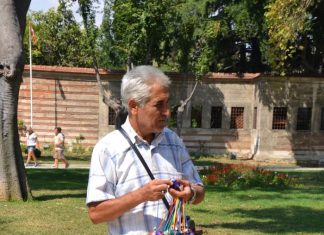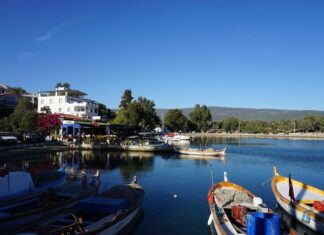Cosmas tells a story from that end of the world going back to his own early days, around 515 CE, when Sopatros the Roman, traveling with Ethi¬opians, arrived in Sri Lanka the same day as a Persian ship. The merchants from the two ships held a contest before the local king, each seeking to prove that his monarch, the imperator Romanorum or the shah of shahs, was the greatest. In this merchant realm, money was decisive: the Roman gold was heavier and better crafted to appeal to the eye. The king gave Sopatros the honors on the spot and his people made Sopatros the center¬piece of a great feast. They took him out and seated him on an elephant and had him paraded about the palace grounds with music and dancing on all sides. Sopatros probably did good business on that trip.
How did Cosmas know that story? He heard it from Sopatros 2,500 miles from Sri Lanka, there at Adoulis, perhaps on the same trip during which he and Menas came upon the obelisk and throne. He heard more stories from Sopatros then, about elephants in droves, and even used as cavalry mounts in battle. Cosmas’s bestiary offers many word pictures of creatures from the ends of the earth, and illustrates most of them: rhinoceros, buffalo, camelopard (giraffe), yak, monokeros (“one-horn,” Merchants like Cosmas also knew in Latin unicorns—in all probability the rhinoceros, slimmed down and glamorized in the retelling), boar, hippopotamus (“river horse,” which he makes look just like a horse, and admits he hasn’t seen), seal, dolphin, and tortoise. Cosmas doesn’t mention the tigers that others saw north of the Caspian Sea. He lived too soon to tell us the story of Xuan Zang, the Buddhist monk from the court of China who explored deep into India in the sixth or early seventh century, looking for the roots of his own enlightenment. Xuan Zang came west out of China on the silk roads, then south through the mountains of the Hindu Kush, almost far enough to meet men like our Alexandrian merchant’s friends.
Cosmas the Christian
Cosmas the Christian lets us know that he wrote several books. The one we’d really like to have is his volume on geography, in which he provided the most detailed observations of the worlds he traveled through. He also wrote on astronomy—the course of the stars in the unchanging sky— before turning to the book we have read, in twelve volumes. Its theme is not quite geography, not quite theology, but something in between,1 for Cosmas has a particular point to make. He remains the only authentic, sincere, and argumentative flat-earther from his era of whom we have a record. We moderns used to be taught that flat-earthers were critics of Christopher Columbus, but that’s not quite accurate.
Columbus’s opponents were, more accurately, “big-earthers,” who argued that if he sailed from Spain to Japan westbound, he would die of thirst and exposure before he ever reached his goal. A true flat-earth theory is quite rare. Few people were so obtuse as to believe such a thing, especially in Alexandria, the capital of ancient natural science. In this context, Cosmas seems to us unusually misguided, with a flat-earth doctrine springing from religious obsession.








